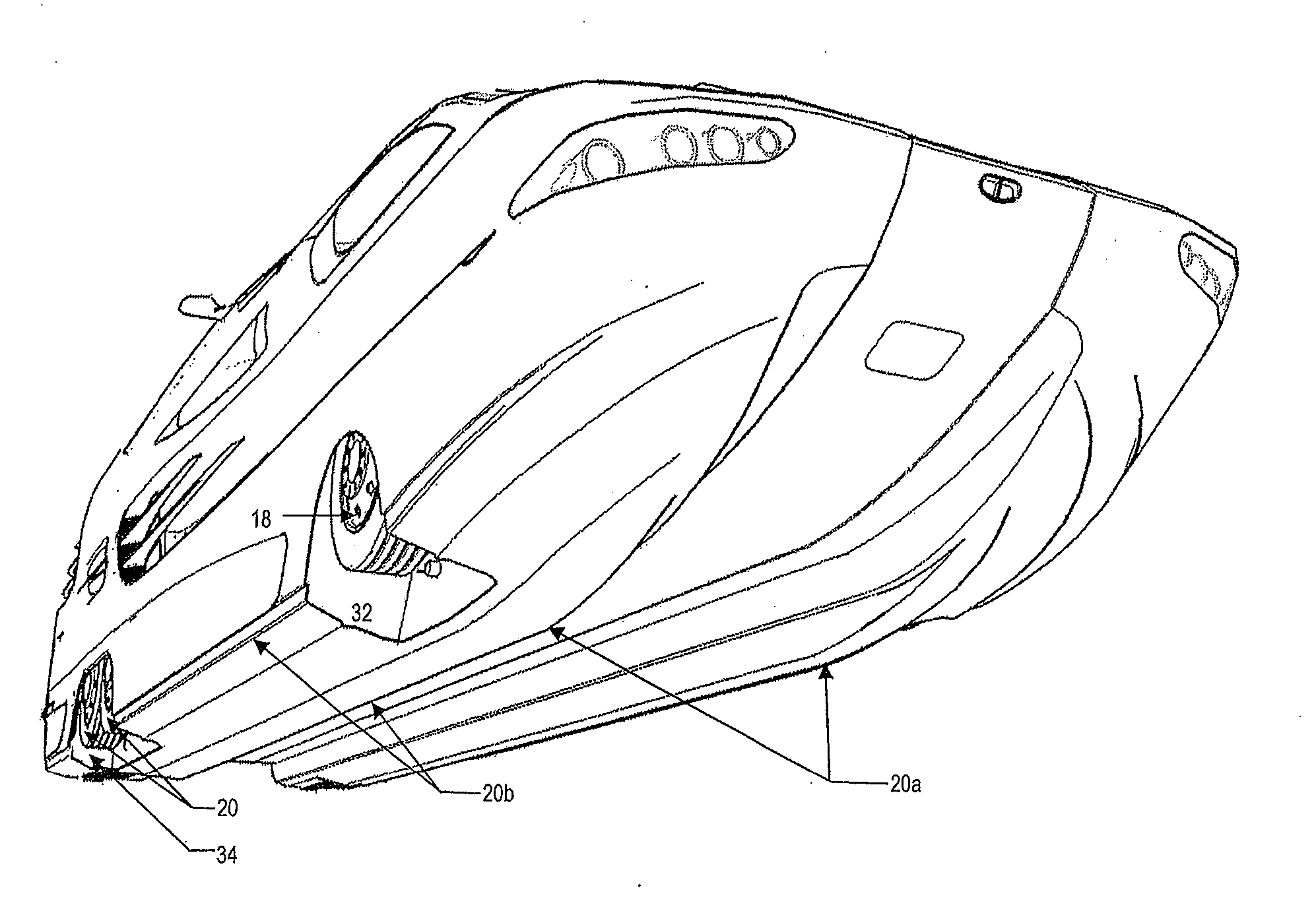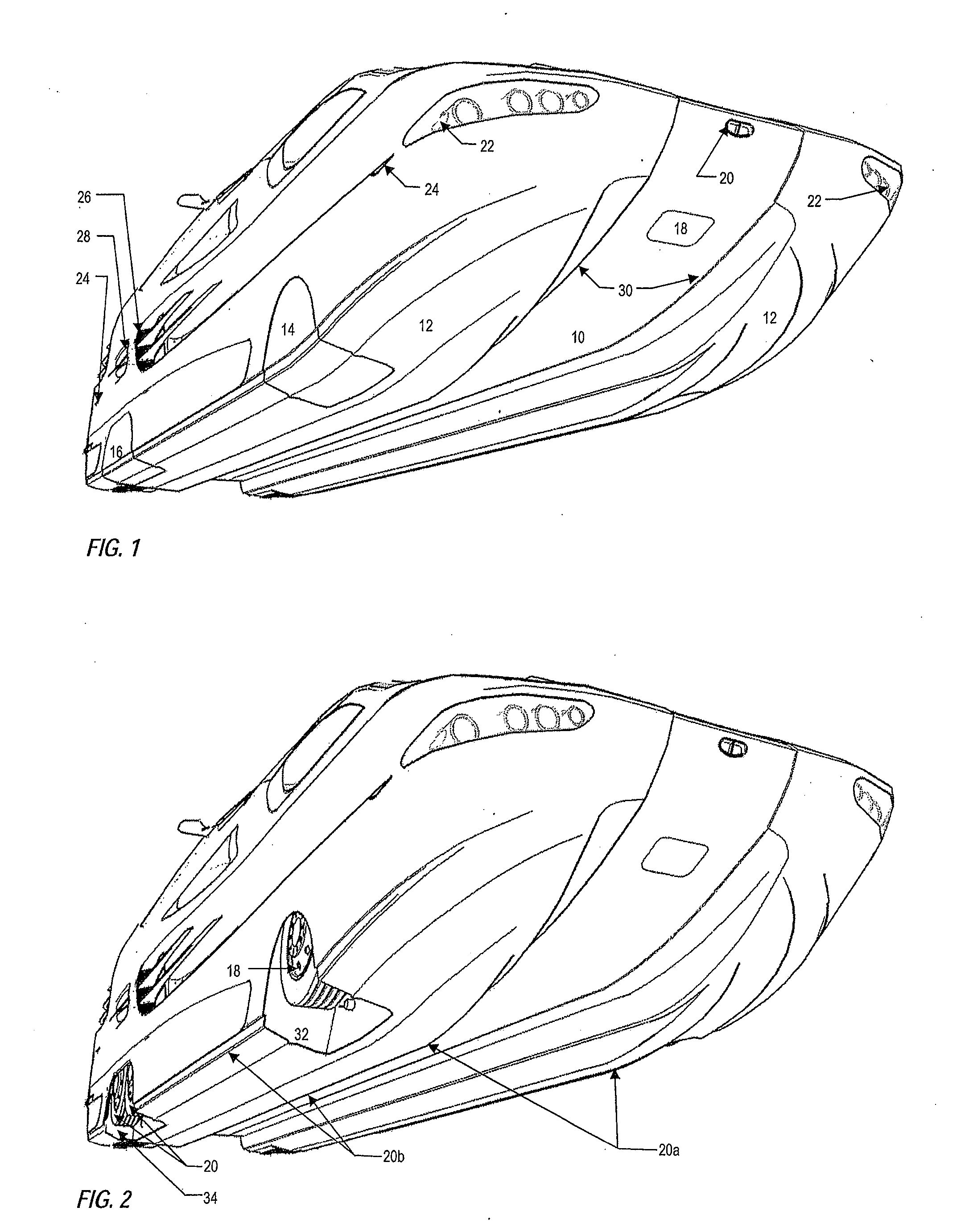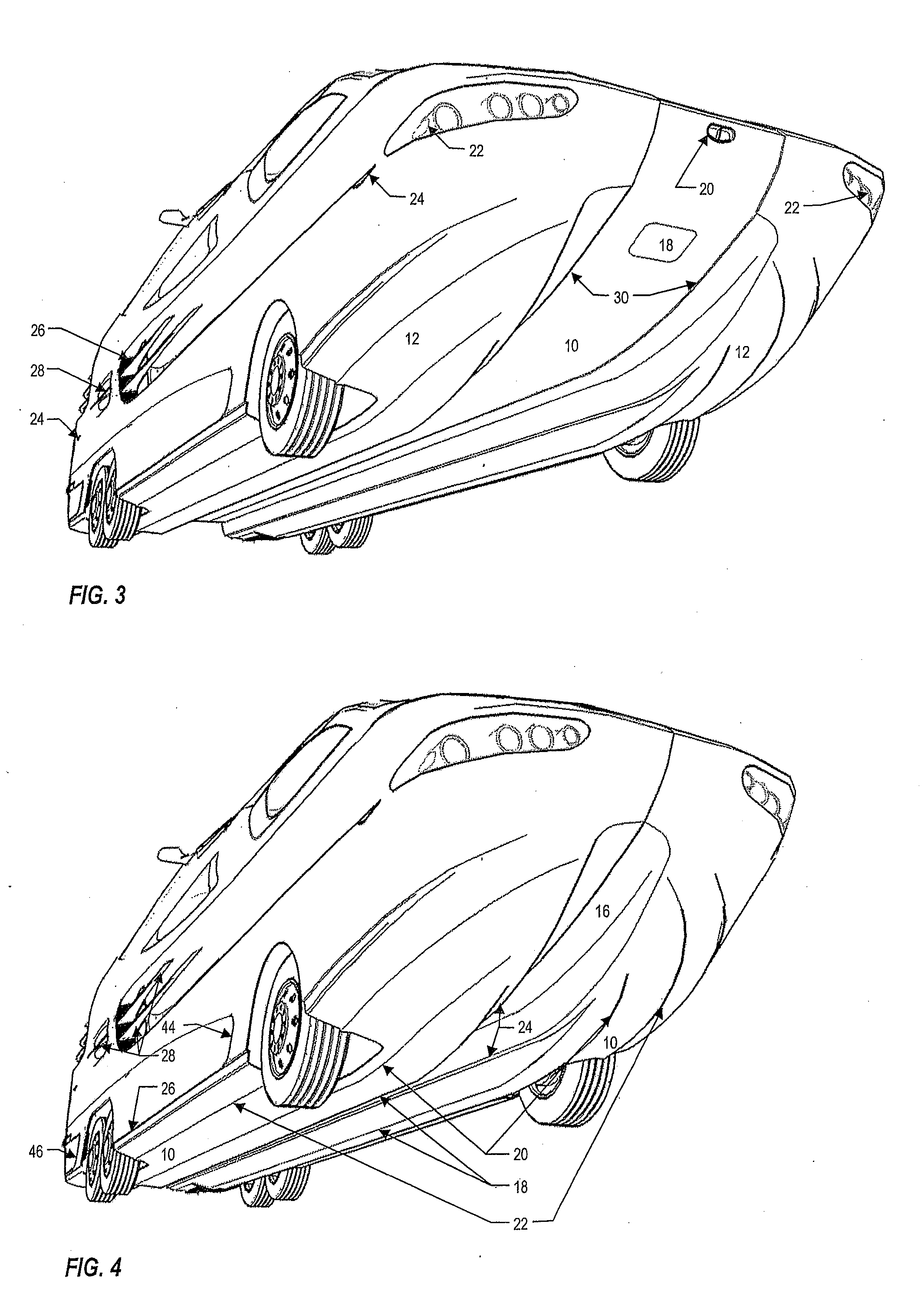Amphibious yacht
a technology for amphibious yachts and yachts, applied in the field of amphibious yachts, can solve the problems of low visibility or rough water conditions, inadequate provisions for docking or mooring, and the design or equipment of prior art vehicles is not designed or equipped for long distances, etc., to achieve the effect of double reducing the size of the forward entertaining salon, and increasing the space for entertaining
- Summary
- Abstract
- Description
- Claims
- Application Information
AI Technical Summary
Benefits of technology
Problems solved by technology
Method used
Image
Examples
embodiment 1
[0057]FIGS. 1-3 illustrate hull or body features above and below the waterline that may contribute to maximizing hull planing by creating lift, reducing wetted profile and drag, and improving hydrodynamic and / or aerodynamic characteristics. Key features include a continuous hull tunnel 10 that separates two asymmetric monohedron hulls 12, each of which may have constant deadrise 20b from the apex 20a of the bow curve to the rear wheel wells. The anchor and anchor locker may be concealed behind a motorized door 18 that may be flush with the hull profile. Windshield wipers may retract underneath body surfaces below the windshields. Red and green colored bow lights 20, distance sensors, cameras, headlights, driving lights, infrared and / or fog lights, turn signals, red and green marine side marker lights 22, retracting rope cleats 24 as well as engine compartment intake vents 26, exhaust vents 28, and heating and air conditioning units may be recessed into the hull or body to create a f...
embodiment 2
[0058]Before making landfall during water travel, as shown in FIGS. 1, 2, 5 and 6, front and rear wheel opening covers 14 and 16 that conceal the front wheel wells 32 and rear wheel wells 34 may be flush with the outer face of the hull and may retract. As shown in FIGS. 5 and 6, this may allow the front wheels 18 and rear pair of wheels 20 to extend down from wheel housings or wheel wells 32, 34 housed inside the hull or body profile, as shown in FIGS. 3 and 6.
embodiment 3
[0059]To overcome problems, exposed wheel opening covers that slide or retract outside the hull or body may have the design such as is described by U.S. Pat. No. 4,958,584. Wheel well opening covers 14, 16, as shown in FIGS. 1, 5 and 6 may retract to their open position inside concealed pockets 40 within the hull or body. When open, wheel housing covers that are concealed within the body may reduce exposure to dirt, mud and debris as well as minor collisions or damage from pilings when docked on water. Such exposure and collisions may inhibit or disable the movement of exposed wheel well opening covers. Concealed wheel opening covers may eliminate negative aerodynamic effects, including increased drag and noise that exposed wheel opening covers may exhibit when traveling on land. When traveling on water, concealed wheel opening covers may alleviate the negative hydrodynamic effects, including increased drag, created by exposed tracks and hardware required for exposed wheel opening c...
PUM
 Login to View More
Login to View More Abstract
Description
Claims
Application Information
 Login to View More
Login to View More - R&D
- Intellectual Property
- Life Sciences
- Materials
- Tech Scout
- Unparalleled Data Quality
- Higher Quality Content
- 60% Fewer Hallucinations
Browse by: Latest US Patents, China's latest patents, Technical Efficacy Thesaurus, Application Domain, Technology Topic, Popular Technical Reports.
© 2025 PatSnap. All rights reserved.Legal|Privacy policy|Modern Slavery Act Transparency Statement|Sitemap|About US| Contact US: help@patsnap.com



